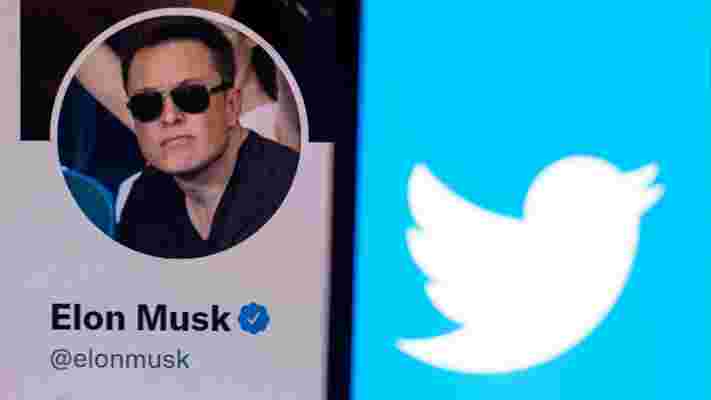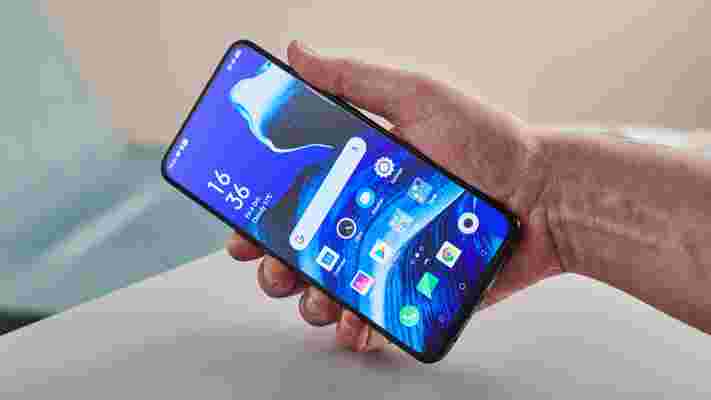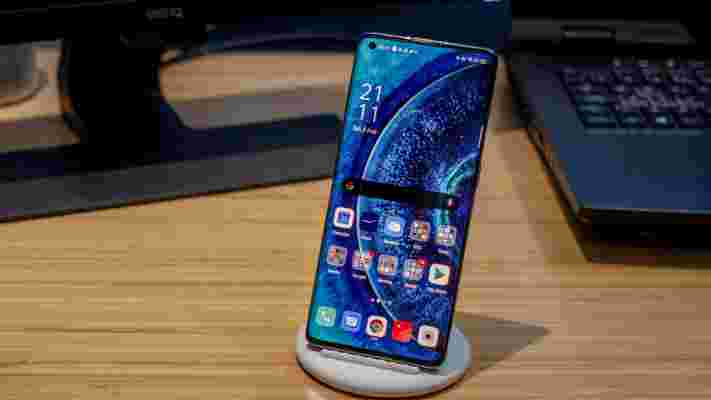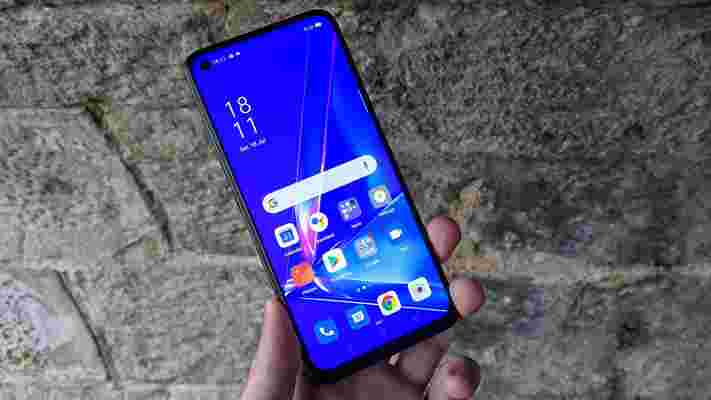Elon Musk just bought Twitter and now the entire internet is on fire (or at least, it feels that way). It's likely that some big changes will be implemented when the dust starts to settle, but Twitter users can look forward to some great new features while we wait to see what Musk has planned for the 16-year old social medial platform.
Firstly, you can now choose to turn closed captions (often abbreviated to CC) on or off whenever you want. This isn't the first CC feature from Twitter, but it does look to be the most convenient, and this updated CC function will complement other accessibility features that Twitter is releasing at the moment, including the highly anticipated ALT badge that allows input for image descriptions.
Another feature being rolled out is the ability for iOS users to create their own GIFs for the platform. Video can be captured on your iOS device in-app and easily converted into a GIF to, as Twitter describes it, "capture your vibe".
The functionality of this looks rather limited as there are no edit features that allow you to apply a filter or effects, but this could be a great asset for content creators who want to spend less time editing social content outside of the app.
Speaking of GIFs...
This isn't the only new GIF-related feature on the horizon, as it looks like Twitter is currently developing something that will allow users to attach photos, GIFs, and videos to a tweet at the same time. This was spotted by reverse engineer Alessandro Paluzzi, who claims to have found references to the feature within the Android app back in July 2020, though nothing was visible at the time. Don't fret if you're an iOS user either as it does look as though references have been found for the same feature on the iOS version of the app. This is all clearly still in a developmental stage so we don't know when the feature will be made available to the public, but here's hoping it's soon.
Lastly, Twitter has announced that it will be prohibiting misleading ads that contradict climate change, the established scientific consensus. This declaration was made on Earth day (Friday, April 22) on the official Twitter blog .
The blog states that "This month, the Intergovernmental Panel on Climate Change published a new and alarming report , underscoring the urgency of the climate crisis – “immediate and deep emissions reductions,” they wrote, are necessary to turn the tide on global warming.
Now more than ever, meaningful climate action, from all of us, is critical. Today – on #EarthDay2022 – we’re sharing more about our work to serve the climate conversations happening across Twitter, plus the latest on our own sustainability commitments." There was little information on how this will be regulated, with Twitter simply affirming that the ban on offending advertisements will be guided by "authoritative sources, like the Intergovernmental Panel on Climate Change Assessment Reports".
Still, Twitter has the goal of its data centers to use a 100% carbon-neutral power source by the end of 2022, and the company does seem intent on hitting that deadline.
The blog post also reads "To better serve these conversations, misleading advertisements on Twitter that contradict the scientific consensus on climate change are prohibited, in line with our inappropriate content policy . We believe that climate denialism shouldn’t be monetized on Twitter, and that misrepresentative ads shouldn’t detract from important conversations about the climate crisis." It's worth pointing out the obvious here: Elon Musk has nothing to do with any of these new features, but it's likely that he will start development for implementing some of his own in the coming weeks. We won't know what the billionaire has in store for his latest toy for at least a few months, though we wouldn't be surprised if an announcement is made in advance that will outline planned changes.
Analysis: What does Elon have planned for Twitter?

Musk might be planning to fast-track the already-under-development Tweet Edits feature given he's already tweeted in support of its implementation. This will further push his public appeal, but whatever else he may have up his sleeve is a mystery.
In a release on the acquisition , Musk said, "Free speech is the bedrock of a functioning democracy, and Twitter is the digital town square where matters vital to the future of humanity are debated.
"I also want to make Twitter better than ever by enhancing the product with new features, making the algorithms open source to increase trust, defeating the spambots, and authenticating all humans. Twitter has tremendous potential – I look forward to working with the company and the community of users to unlock it."
What we do know is that Musk wants to ensure Twitter supports free speech from all sides, though there's some confusion over what this could actually mean, given there's no empirical evidence to support that it doesn't already.
He may also revisit some user bans, including that of former President Trump and Infowars creator Alex Jones. You can peruse the list of current Twitter bans and suspensions over on Wikipedia , and given how many of those blocked from the platform have a history of pushing misinformation, conspiracy theories and extremist viewpoints, it's natural that some current Twitter users would have concerns over them returning to the platform.
Musk might also push NFTs and cryptocurrency using Twitter's platform, much as he has used his own account. This has led to claims that he uses market manipulation tactics because of his position of power, a valid criticism, but one that his lawyers have pushed back on.
Still, investors and backers will be most interested in Musk's growth plan and how he can transform the platform to generate more revenue from existing users. His ability to manifest money and business-savvy mind could be a real asset to the company, but just because something is marketable, doesn't mean that it'll retain its userbase or following. Social Media buyouts have gone badly in the past. Hopefully, Musk has had time to study what happened to Tumblr after Yahoo's acquisition and is prepared to learn from its mistakes, lest a mass migration away from Twitter occurs to a more welcoming space. With Facebook's userbase tanking, Twitter's potential transformation or desecration could be the spark that brings us closer to The Internet 2.0.
What are Oppo phones? A guide to the company and its smartphones
Oppo is one of the Chinese phone brands that's currently gaining popularity in the West, with its wide selection of smartphones hitting a broad range of price points to make them appealing to various buyers.
Sure, it isn’t in the same league as Samsung or Apple, or even its Chinese rivals such as Xiaomi and Huawei, but its popularity is certainly growing, and we’re expecting to see lots of big things from the company in the coming years.
That's from the brand's flagship line of Find devices, as well as its mid-range Reno and low-end A series.
If you’re a fan of premium-looking smartphones, top camera capabilities and screen innovations, then it would be worth keeping an eye on Oppo and the devices it launches.
To help you learn more about Oppo, this guide covers the company’s history, the phones it’s launched, and what we might see from Oppo in the future.
A brief history of Oppo

Oppo was founded in 2004, with its first products focusing on the audio devices market. The company has continued to keep a finger in the audio and home theater pie.
In 2008, Oppo launched its first mobile phone – a distinctive device as a result of the smiley face on its rear. This was followed by the company’s first smartphone in 2011.
The brand has continued to see growth since, now selling products in around 40 different countries around the world.
Like Realme, OnePlus and Vivo, Oppo is also affiliated with tech conglomerate BBK Electronics, and we often see Oppo put out very similar products to those of OnePlus, so it seems the companies share R&D or production. Just compare the Oppo Find X2 Pro and OnePlus 8 Pro if you're in doubt.
Some of BBK’s other brands have distanced themselves from the conglomerate; for example, Vivo has asserted its independence of the company.
What phones does Oppo make?

In most countries, Oppo sells handsets under three key lines; in others, the company has a few more lines, but they’re not widely available. We’ve also seen some concept devices from the company, such as the Oppo X Nendo and Oppo X 2021.
Sitting at the top of the tree is the Find line of premium mobiles. Available alongside Pro, Neo and Lite models, the phones feature top screen specs, bespoke camera sensors from Sony, and often command high prices. The Lite models are typically more affordable, however.
X isn't the only letter of Find, judging by the Find N , the brand's debut foldable phone.
Next up is the mid-range Reno series of smartphones, whose latest addition is the Reno 5 line. These comprise ‘standard’, Pro and ‘Z’ (‘Lite’ in all but name) models, and take the specs and features of the Find X line, but in more affordable bodies.
The Reno handsets are either launched sporadically in various regions, or made available in one country only, then sold elsewhere at a later date with tweaked specs. We’ve also seen Reno phones rebranded as Find X devices, sold as mid-spec models in those lines, so it can get a little confusing.
Lastly, we have the Oppo A phones. These handsets typically come with decent-sized screens, generous batteries and low prices. There have been good and bad Oppo A phones, but if you’re looking for a cheap and cheerful device then you could do a lot worse.
Oppo phone availability information

Oppo sells its devices in the UK, in European countries like Italy, France and Germany, and in Australia. However, it hasn’t sold smartphones in the US for a good few years, though some of its early smartphones got releases there.
The Oppo Find X phones follow a yearly release pattern, with unveilings around March. In the past this has typically coincided with the annual tech show, MWC.
Oppo Reno phones are released roughly twice a year, but this isn’t set in stone. Since launching in mid-2019, the Oppo Reno line has seen five generations. It’s hard to say exactly when we’ll see each new line, especially since the company may stagger launches across various regions.
There’s no concrete release pattern for Oppo’s A-series handsets, although in the past we’ve seen a new model hit the market every couple of months.
Other tech Oppo sells
As mentioned, Oppo is an established name in the audio devices market, selling wireless and true wireless headphones alongside its range of smartphones.
To date, the company has also released one smartwatch, called the Oppo Watch, and we’re likely to see more such devices in the future.
Google Pixel Watch: here's everything we know so far
Could the Google Pixel Watch debut tomorrow (May 11)? Well some rumors say so, though we have been hearing this for years now - but the fact that Google IO 2022 is about to start makes us hopeful.
This Google conference is scheduled for May 11, and with Google's CEO confirming that new products from the company will be shown off , and especially in light of multiple recent leaks of the Pixel Watch, there's a lot of hope right now.
This is expected to be a grand showcase for Wear OS 3, in the same way that Pixel phones are a showcase for the Android operating system, showing just how the Google software is meant to work on a native device. Given the wearable operating system's big update from last year's Google I/O showcase, we figured the watch wasn't far behind. Flash forward a year, and we think it's finally coming.
Here's everything we know so far about the upcoming watch, as well as a list of the features we'd like from the first flagship Google Watch. Where are we, Google Wear?
Cut to the chase
May 10: We're just a day away from Google IO 2022 and the possible launch of the Pixel Watch. Here's how to watch the Google IO live stream .
April 30: More leaks have dripped out, potentially revealing the Pixel Watch battery size and connectivity options.
April 28: Three different Pixel Watch models have been certified , and we now have a clearer idea of the possible price.
April 26: Apparently a Google Pixel Watch was left in a restaurant , and now we have loads of pictures of the thing as a result.
April 25: We could also see a Pixel Watch Fit with a high price, and leaked photos may have given us a look at the Pixel Watch.
April 24: A trademark for the Pixel Watch name has now been filed by Google in another sign that it's coming soon.
April 15: As per well-respected leaker Evan Blass, it "won't be long now" before we see the wearable get its official unveiling by Google. Blass Also cites the Pixel's apparent code name: Pixel Rohan .
March 28: Are we still waiting? The Pixel Watch will be unveiled at I/O but won't launch until October , alongside the Pixel 7 and the Pixel 7 Pro, says tech tipster Jon Prosser.
An exact release date for the rumored Google Pixel Watch isn't clear – just predictions based on leaks. However, there's a chance it will be shown during the Google IO 2022 keynote on May 11. This kicks off at 1pm ET / 10am PT / 6pm BST, or 3am AEST on May 12 for those in Australia, and we've got a guide covering how to watch the Google IO 2022 live stream .
One report from Insider claims to have spoken to people familiar with the matter who suggest it's coming in 2022, and more recently we've heard that May 26, 2022 will be the big day – which is close enough to the Google IO date that they might have just got it slightly wrong.
The wearable has also reportedly been spotted on a carrier's inventory system in the US, suggesting they're preparing it for sale, making a May launch looking more likely.
That said, a tweet from noted leaker Evleaks claimed a "reliable source" said it would be announced alongside the Google Pixel 3 and Pixel 3 XL back in 2018, then a rumor claimed the Google Watch would land on October 15 2019 at the Pixel 4 launch – but of course, neither happened, and we're still waiting.
One recent report suggests that the global chip shortage is going to push the Google Pixel 6a launch back from May to late July , and that the Pixel Watch is going to shift as well to match the same schedule. One report hints that the wearable will appear with the Pixel 7 in October .
We're fairly confident that such a watch is definitely in the works though, and it's possible that the Pixel Watch could benefit from Google's acquisition of Fitbit , which could see the latter company's wearable skills put towards Google smartwatch hardware.
Better still, at Google IO 2021 the company announced that Wear OS is integrating features from Samsung's Tizen OS, which could suggest what's coming in the Google Watch.
We've also heard that Google has reportedly ordered processors from Samsung (according to ETNews ) which would be capable of detecting body movements. There's no guarantee that these are for a smartwatch (they could be for a Pixel phone) but a wearable would be an obvious fit. That, then, is strong evidence that some form of Pixel Watch is in the works.
However, it might not launch everywhere, with one source saying it will get a "limited release", though the US and UK look likely to be included.
As for price, one leak puts the price of a 'Pixel Watch Fit' at around $400 (roughly £315 / AU$555). That would put it inline with the Apple Watch 7 , but it's not clear if this is the main Pixel Watch or a spin-off.
A slightly more recent price leak has now said that it could cost between $300 (roughly £240 / AU$420) and $400.
The first real Pixel Watch design leak came from leaker Jon Prosser, who shared an image showing the wearable with a physical crown.
Prosser followed up with a batch of rendered images based on info provided by a source, which show potentially the first full looks at the Pixel Watch's supposed design. Here's the full video of Prosser's reveal.
Per the renders, the Pixel Watch looks like a circular smartwatch with a bezel-less display, no buttons, and a single physical crown on the right side. The renders also recreate the suggested interface, including a watch face with radial time markers, giving it an analog timepiece look. The apps look very simple, suggesting Google could be going for a more elegant minimalist design.
We've since seen what is supposedly a leaked image from Google's marketing department, showing off what the Pixel Watch is going to look like. You can check it out below – the lack of bezel and the minimal design matches up with the unofficial renders we've also seen.

We've also now seen leaked photos of what appears to be the Pixel Watch in the flesh. These show it in black with a circular screen, a thick build, and small bezels. They also show a crown, at least one physical button, and a proprietary strap connector.
Finally, a US carrier has listed the wearable as coming in gray, black and gold shades.
We're starting to get quite a clear picture in terms of the specs of the Google Pixel Watch. Recent leaks have revealed that the wearable will come with a 300mAh battery (like the Fossil Gen 6) and offer cellular connectivity on at least one model, so you can make and receive calls even when your phone isn't connected.
One source suggests it will use a 5nm chipset - likely the same one as the Samsung Galaxy Watch 4 has. Since then more evidence of a Samsung Exynos chip has emerged, so this is likely.
A carrier's inventory system also lists the wearable as coming with 32GB of storage, and its presence there suggests there will probably be a cellular version, as this carrier has never sold a non-cellular smartwatch.
Elsewhere, possible watch faces for the Pixel Watch have also leaked, showing things like step counts, heart rate and the weather. Interestingly, one also includes a Fitbit logo, suggesting the Pixel Watch could incorporate some Fitbit features.
There's other evidence that there could be a big focus on fitness too, both because Google has bought Fitbit, and because Google sent out a survey asking people about features they'd like to see in Wear OS, and those features included things like SPO2 (oxygenation) tracking, sleep apnea detection, sleep analysis, heartbeat alerts, recovery time monitoring, stress tracking, pairing for medical devices and gym equipment, rep detection, and calorie tracking.
Of course, it's unlikely they would all be added, but some may well be, and it shows that Google is thinking about health and fitness.

One rumored feature was something codenamed 'Blackghost'. It was thought to be be a power management integrated circuit built into the chipset itself that will allow the watch to listen out for voice commands at all times without draining the battery.
If this does appear, expect to be able to ask Google Assistant questions without either draining your smartwatch after a few hours or having to press a button beforehand.
Similarly, we've now heard that the Pixel Watch might support on-device processing for Google Assistant, which could speed the service up. A new-look design for Assistant has also leaked, as you can see below.

Another report - this time from WinFuture - has suggested there may actually be three versions of the Pixel Watch in development. The website has heard word of devices with code names Ling, Triton and Sardine all in development at Google HQ.
Exactly what the differences for the devices would be are currently unclear. It may mean we'll see three variants of the Pixel Watch. That same report also suggested at least one version of the watch will come with 1GB of RAM.
This report could mean there will be one watch in the range with LTE or another that's designed to be more focused on fitness. This report is also quite old now, so it may no longer be relevant.
That said, three different Pixel Watch models seem to have now been certified , and we've heard that there could be a spin-off called the Pixel Watch Fit. One source also points to two different sizes of watch, which is another way the models could differ.
We've also seen a Google patent , which details a gesture control system that would allow a smartwatch to detect movements you make with your arm, wrist or fingers.
For example, you could make a fist to launch Google Assistant and open the fist to dismiss it. These gestures would be done on the arm or hand that the watch is worn on. However, patents aren't always used, so there's no guarantee we'll see this.
Below we've put together a list of the things we want to see from the Google Pixel Watch.
1. Rotating crown or bezel
Before the switch to Wear OS, Android Wear 2.0 put a big focus on how the design had been reworked to play well with rotating bezels and crowns, but then we haven't seen many watches embrace that.
Why not use it for the Google Pixel Watch? Those features may be far in Google's rear view mirror as the Wear OS updates take precedent, but we'd love to see an innovative way of interacting with the watch such as a rotating crown or bezel.
2. In-display fingerprint scanner
If Google really wants to put the Pixel Watch on the map, adding an in-display fingerprint scanner would go a long way to doing that. Currently Wear OS watches (and the Apple Watch ) allow you to secure them with a PIN code – but that’s not the most secure form of protection available.
With an in-display fingerprint scanner, the secure biometric technology would fit seamlessly into the wearable without disrupting the visual appeal of the watch. It would also allow you to approve purchases over the current contactless limit (assuming the Pixel Watch comes with NFC).
There are a couple of potential negatives here though. Firstly, the addition of this fledgling technology could increase the thickness of the watch – and no one wants an overly chunky wearable – but secondly it’ll also likely push the price tag way up.
If Google can overcome these two things though, you can sign us up for a Pixel Watch right now.
3. Swimproof
We’re used to smartwatches coming with a level of dust and water resistance, but few carry an IP certification high enough to ensure their survival when we cannonball into the local pool.
A fully swim-proof Google Pixel Watch would not only allow you to keep the wearable on in the bath, but also allow you to track workouts in the pool without fear of malfunction.
4. Three day battery life
This is a simple one, but we want the Google Pixel Watch to last as long as it can. Imagine a fully fledged smartwatch that doesn't need charging after two days of intensive usage.
Wear OS is integrating a useful enhanced battery saver mode that should give you a lot more time with your smartwatch, but it'll limit the amount of features you can use when it's on.
Clearly Google wants to improve how long your watch will last from one charge, but we'd love to see a big battery inside the watch and well optimized software that offers the best battery for a smartwatch on the market right now.
5. NFC payments
Another simple one here, but quite a few Wear OS watches don't come with NFC built in so you aren't able to use Google Pay features on your wrist. That's a frustration for a lot of people, so we're hoping Google will include an NFC chip inside the watch.
That'll especially be useful when you're out for a run and you need to buy a bottle of water, but you've left your wallet at home.
6. Best in class fitness
While we're on the topic of running, we want the Pixel Watch to compete with the fitness prowess of the Apple Watch 3 as well as top-end specialist watches like the Garmin Forerunner 935 .
Imagine if Google can include all of the latest tracking tech including accurate GPS, LTE so we can listen to music on the go as well as a top of the range heart rate tracker.
We want to be able to strap the Google Pixel Watch to our wrist and head out for any type of exercise and know we'll be tracked accurately and get as much fitness stats as we possibly can.
7. High-end watch design
This one is a given, but we want to see a watch that you're not embarrassed to wear on your wrist. Not every Wear OS watch is a gorgeous creation, so we wish Google will be able to offer a slimmer option than most other manufacturers that uses high-end materials and feels like a proper timepiece you're excited to wear.
If you're going to be spending a fair amount of money on a new watch, you'll want it to look great on your wrist so this is one of the most important things we want to see on the new wearable.